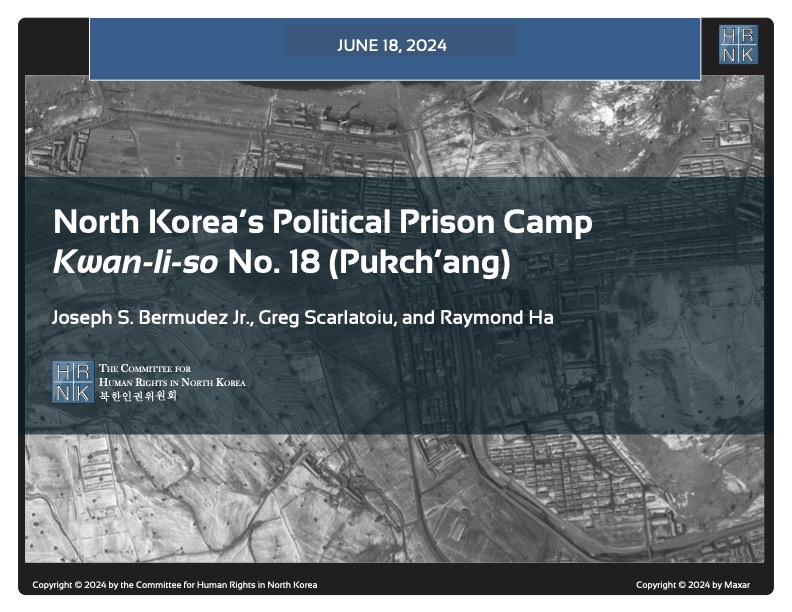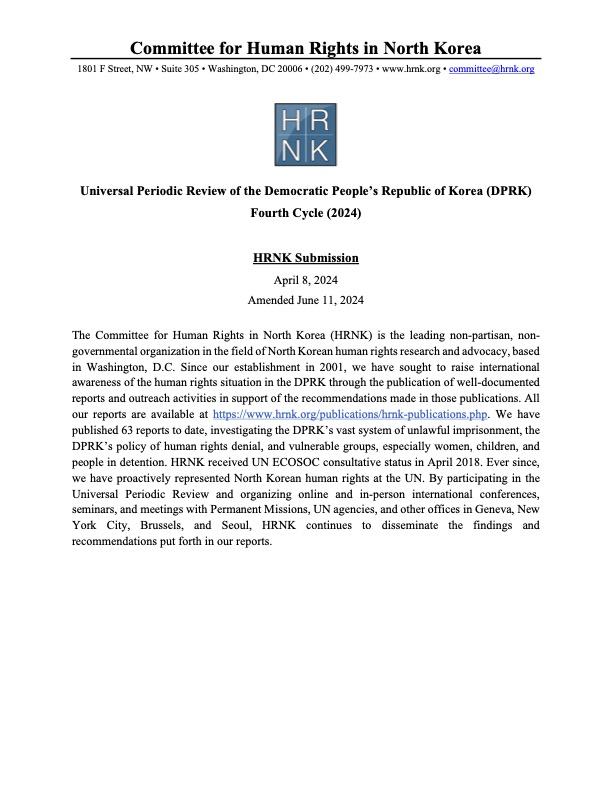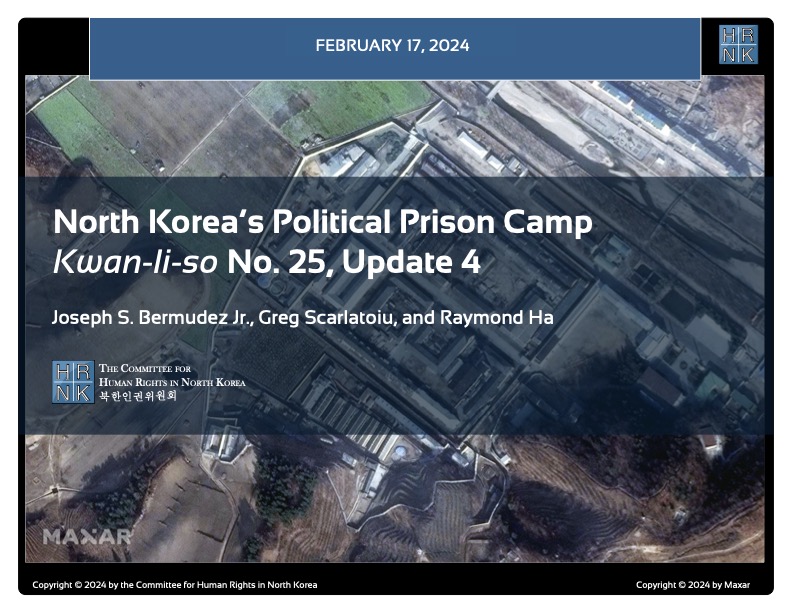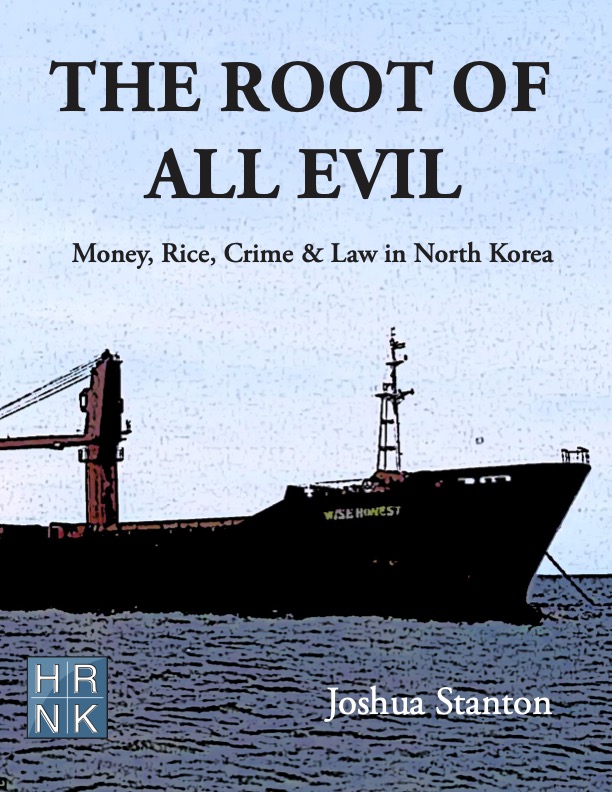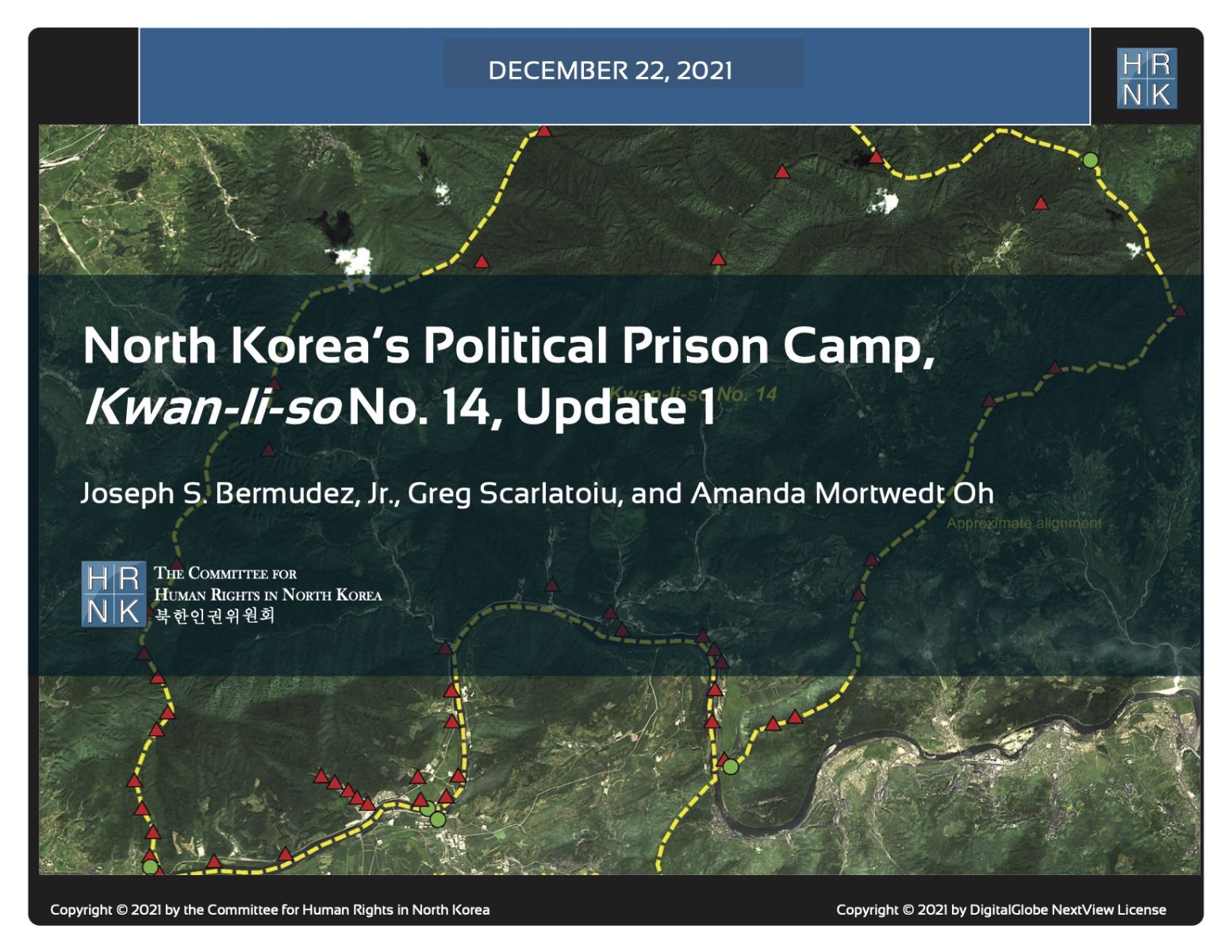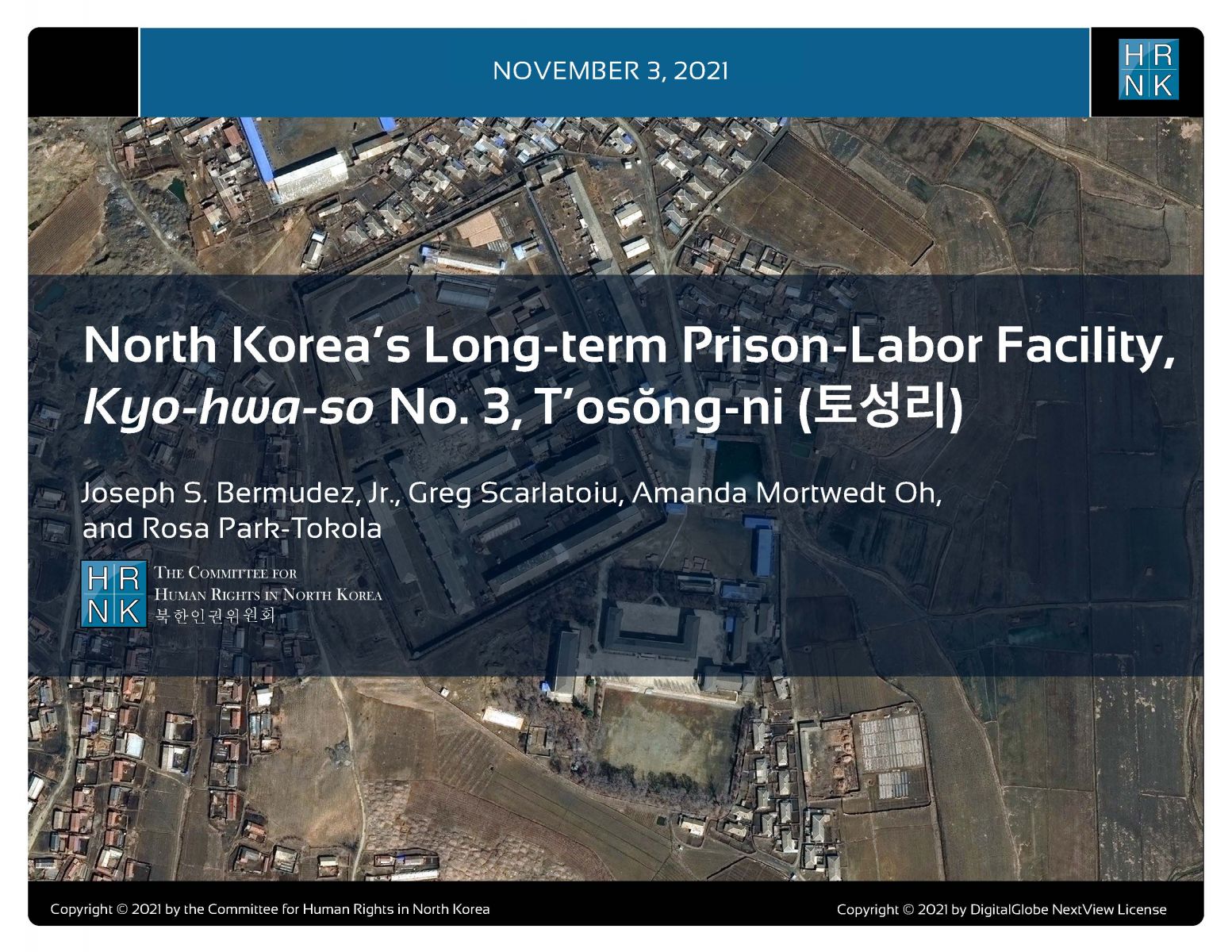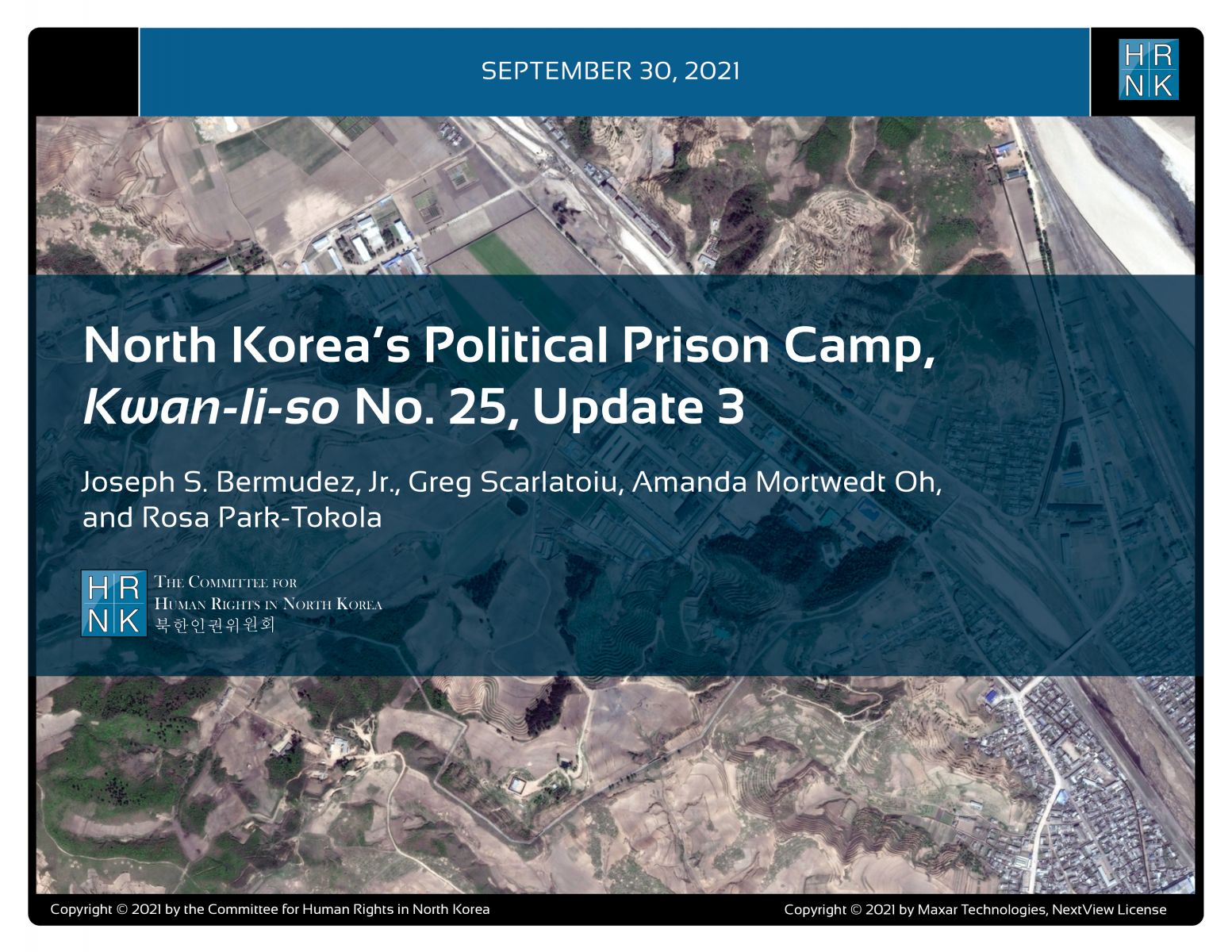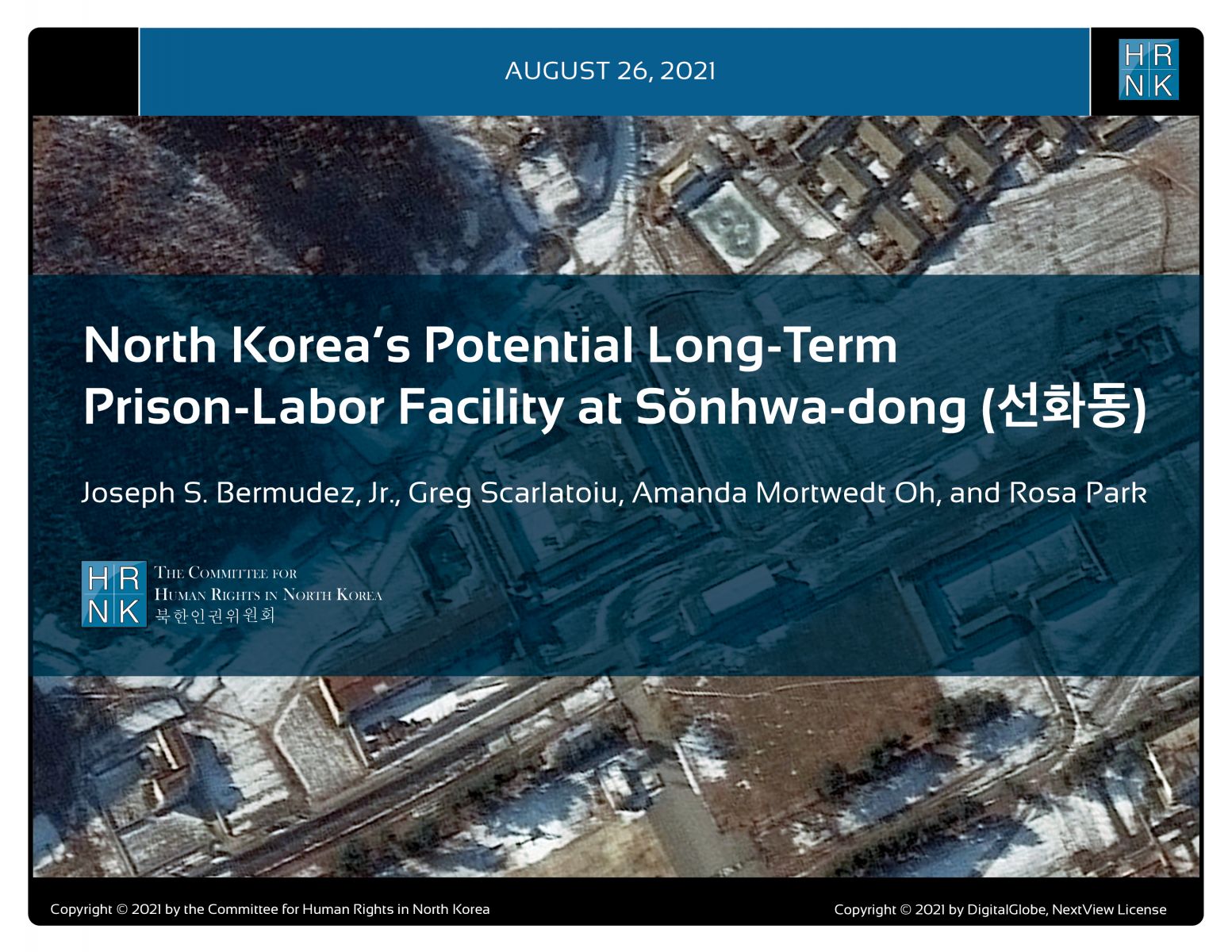북한인권위원회(HRNK), 북한의 차별적 사회분류시스템인 “성분”에 대한 종합적 분석 출판
워싱턴 디씨에 소재한 비정부기구이자 북한인권에 대한 연구와 보고를 맡고 있는 북한인권위원회(HRNK)는 2012년 6월 6일 미국기업연구소에서 “Marked For Life: Songbun—North Korea’s Social Classification System”을 출판한다.
이 보고서는 미 국방부의 37년 베테랑이자 북한 및 동북아시아 안보 문제에 관한 전문가인 Robert Collins가 집필하였다. Collins는 “모든 북한 인권침해의 기저를 이루며 북한사회의 모든 면을 파고드는 가장 기본적 개념인 북한의 성분시스템을 밝히는 것이 필수”라고 말하고 있다. 그는 보고서 출판을 위해 그가 인터뷰한 75명의 탈북자에게 이 보고서를 바친다고 하였다.
태어날 때부터 모든 북한사람들은 가족구성원의 정권에 대한 정치적 충성도를 바탕으로 정부에 의해 성분 지위를 부여받게 된다. 비록 세계인권선언에서 “모든 인간은 존엄과 권리에 있어 자유와 평등을 가지고 태어난다” 라고 명시하고 있지만 모든 북한사람들은 “충성계층,” “동요계층,” “적대계층” 중 하나로 구분되며 계층에 따라 식량분배, 집, 거주지, 직업, 교육 등 모든 인간생활의 면에 있어 차별을 받게 된다. 동요계층과 적대계층은 약 총인구의 72%로 추정되며 오직 소수계층만이 평양에 거주하며 값비싼 특권을 누릴 수 있다.
15-20만명의 북한사람들이 구류된 것으로 추정되는 북한 정치범수용소 혹은 “gulag” 은 사회로부터 “반혁명분자”를 제거하고 평양으로부터 축출하며 그들과 그들의 가족을 불안정한, 외진 산악지역에 고립시키기 위해 고안되었다.
“북한정부는 지난 세기 가운데 가장 잔인하고 억압적이며 통제된 정치시스템으로 주목할 만하다.”라고 국제개발처(USAID) 전 책임자이자 북한인권위원회 공동의장인 앤드류 나치오스는 말했다. 성분 시스템은 모든 북한주민들을 태어날 때부터 “일생동안 기록하는” 사회통제시스템으로 분류한다.
“비록 돈, 뇌물, 부정부패가 성분시스템을 침식하기 시작하긴 했으나 완전한 정치적 자유의 부재로 특징지어지는 치명적인 정치차별의 요소는 여전히 남아있다.”라고 북한인권위원회 공동의장인 로버타 코헨은 보았다.
“지난 64년의 존속기간 동안 김씨 정권은 북한이 평등한 노동자들의 천국이라 주장해왔다. 그러나 불평등은 태어날 때부터 북한 주민의 일생을 파고들며 권력층의 이익을 위해 잔인하게 지속된다.” 라고 북한인권위원회 사무총장 그레그 스칼라튜는 말했다.
첫 부분에서 이 보고서는 북한이 국제연합 총회 인권이사회와 인권특별보고관에 북한사회에 대한 자유로운 접근을 허용하여 그들이 북한주민들의 인권에 성분시스템이 미치는 영향을 연구할 수 있도록 할 것을 당부하고 있다. 또한 정부기관, 비정부단체 및 국제기구는 북한의 정밀한 국가적 차별시스템에 주의를 기울이고 명백하게 기본적인 인권 원리를 침해하는 이러한 관습을 폐지하기 위해 노력할 것이 요구된다.
2001년 저명한 외교 및 인권 전문가들에 의해 설립된 북한인권위원회(HRNK)는 증거가 충분히 입증된 리포트와 보고서 출판, 컨퍼런스 주최, 국내 및 국제 토론회에서의 증언, 북한사람들의 고립을 끝내기 위한 창의적 방안 모색 등의 방법으로 북한의 인권상황에 대한 관심을 이끌어내기 위해 노력하고 있다. 북한인권위원회는 가장 최근 2012년 4월 컨퍼런스에서 북한의 정치범수용소캠프에 관한 저서 Hidden Gulag을 출간하였다.
성분보고서와 관련한 질문이 있으시면 북한인권위원회 사무총장인 그레그 스칼라튜에게 문의하시기 바랍니다 ([email protected], 202-499-7973).
This is the first satellite imagery report by HRNK on a long-term political prison commonly identified by researchers and former detainees as Kwan-li-so No. 18 (Pukch'ang).
This report was concurrently published on Tearline at https://www.tearline.mil/public_page/prison-camp-18.
To understand the challenges faced by the personnel who are involved in North Korea’s nuclear program, it is crucial to understand the recruitment, education, and training processes through the lens of human rights. This report offers a starting point toward that understanding.
North Korea’s scientists and engineers are forced to work on the nuclear weapons program regardless of their own interests, preferences, or aspirations. These individuals may be described as “moder
In this submission, HRNK focuses its attention on the following issues in the DPRK:
- The status of the system of detention facilities, where a multitude of human rights violations are ongoing.
- The post-COVID human security and human rights status of North Korean women, with particular attention to sexual and gender-based violence (SGBV).
- The issue of Japanese abductees and South Korean prisoners of war (POWs), abductees, and unjust detainees.
This report provides an abbreviated update to our previous reports on a long-term political prison commonly identified by former prisoners and researchers as Kwan-li-so No. 25 by providing details of activity observed during 2021–2023.
This report was originally published on Tearline at https://www.tearline.mil/public_page/prison-camp-25.
This report explains how the Kim regime organizes and implements its policy of human rights denial using the Propaganda and Agitation Department (PAD) to preserve and strengthen its monolithic system of control. The report also provides detailed background on the history of the PAD, as well as a human terrain map that details present and past PAD leadership.
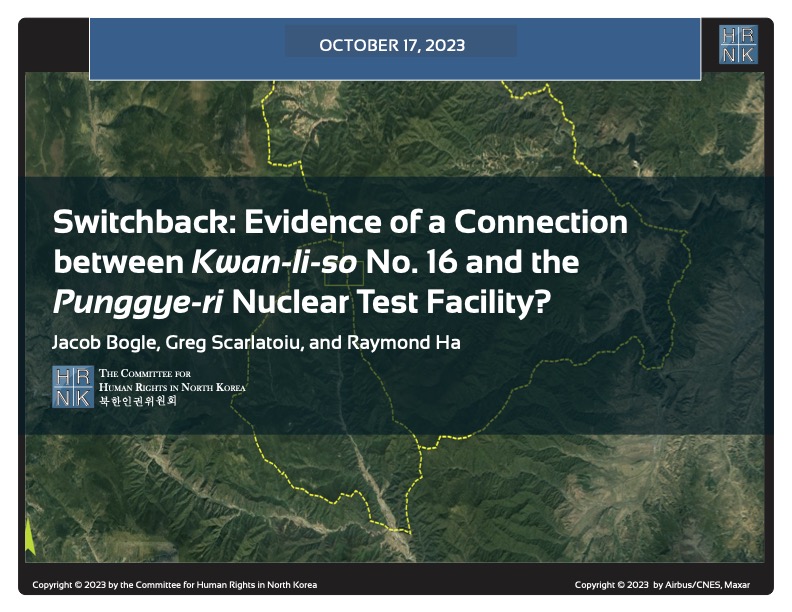
HRNK's latest satellite imagery report analyzes a 5.2 km-long switchback road, visible in commercial satellite imagery, that runs from Testing Tunnel No. 1 at North Korea's Punggye-ri nuclear test facility to the perimeter of Kwan-li-so (political prison camp) no. 16.
This report proposes a long-term, multilateral legal strategy, using existing United Nations resolutions and conventions, and U.S. statutes that are either codified or proposed in appended model legislation, to find, freeze, forfeit, and deposit the proceeds of the North Korean government's kleptocracy into international escrow. These funds would be available for limited, case-by-case disbursements to provide food and medical care for poor North Koreans, and--contingent upon Pyongyang's progress
For thirty years, U.S. North Korea policy have sacrificed human rights for the sake of addressing nuclear weapons. Both the North Korean nuclear and missile programs have thrived. Sidelining human rights to appease the North Korean regime is not the answer, but a fundamental flaw in U.S. policy.
(Published by the National Institute for Public Policy)
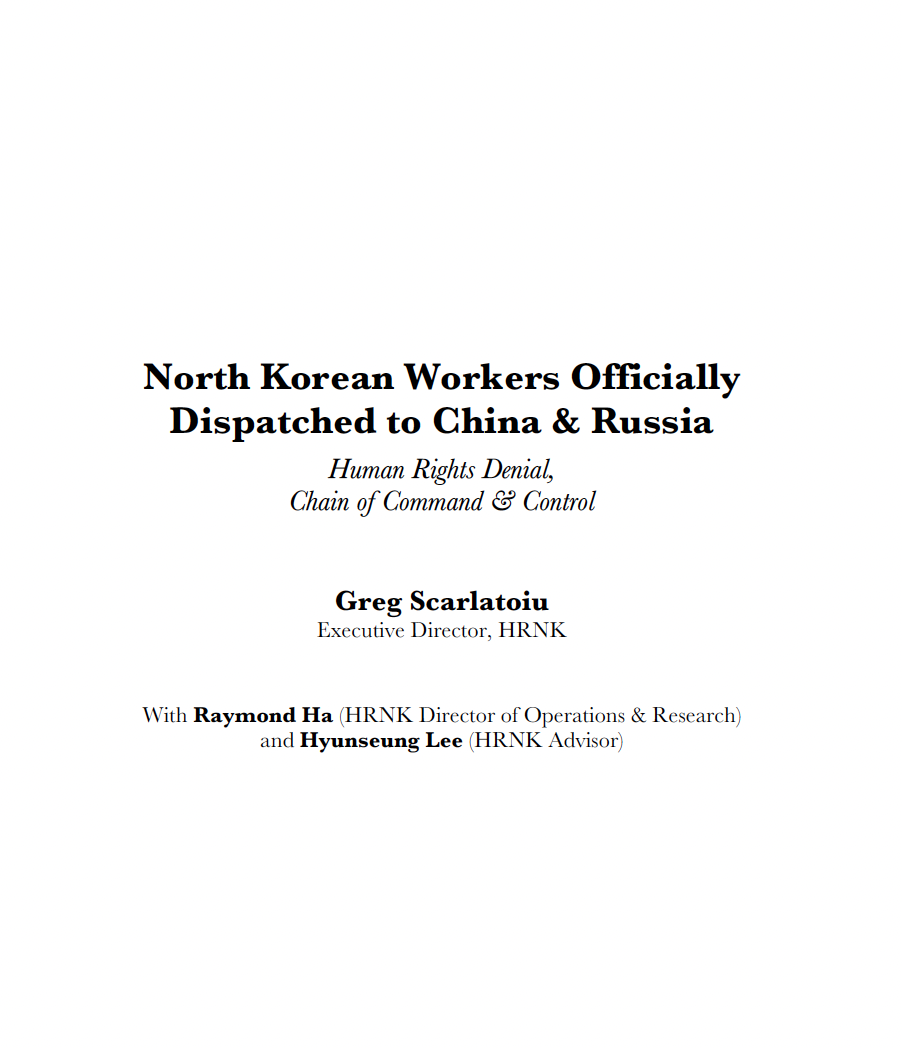
North Korea’s forced labor enterprise and its state sponsorship of human trafficking certainly continued until the onset of the COVID pandemic. HRNK has endeavored to determine if North Korean entities responsible for exporting workers to China and Russia continued their activities under COVID as well.
George Hutchinson's The Suryong, the Soldier, and Information in the KPA is the second of three building blocks of a multi-year HRNK project to examine North Korea's information environment. Hutchinson's thoroughly researched and sourced report addresses the circulation of information within the Korean People's Army (KPA). Understanding how KPA soldiers receive their information is needed to prepare information campaigns while taking into account all possible contingenc
This report is part of a comprehensive long-term project undertaken by HRNK to use satellite imagery and former prisoner interviews to shed light on human suffering in North Korea by monitoring activity at political prison facilities throughout the nation. This is the second HRNK satellite imagery report detailing activity observed during 2015 to 2021 at a prison facility commonly identified by former prisoners and researchers as “Kwan-li-so No. 14 Kaech’ŏn” (39.646810, 126.117058) and
This report is part of a comprehensive long-term project undertaken by HRNK to use satellite imagery and former prisoner interviews to shed light on human suffering in North Korea by monitoring activity at civil and political prison facilities throughout the nation. This study details activity observed during 1968–1977 and 2002–2021 at a prison facility commonly identified by former prisoners and researchers as "Kyo-hwa-so No. 3, T'osŏng-ni" and endeavors to e
This report is part of a comprehensive long-term project undertaken by HRNK to use satellite imagery and former detainee interviews to shed light on human suffering in the Democratic People’s Republic of Korea (DPRK, more commonly known as North Korea) by monitoring activity at political prison facilities throughout the nation. This report provides an abbreviated update to our previous reports on a long-term political prison commonly identified by former prisoners and researchers as Kwan-li-so<
Through satellite imagery analysis and witness testimony, HRNK has identified a previously unknown potential kyo-hwa-so long-term prison-labor facility at Sŏnhwa-dong (선화동) P’ihyŏn-gun, P’yŏngan-bukto, North Korea. While this facility appears to be operational and well maintained, further imagery analysis and witness testimony collection will be necessary in order to irrefutably confirm that Sŏnhwa-dong is a kyo-hwa-so.
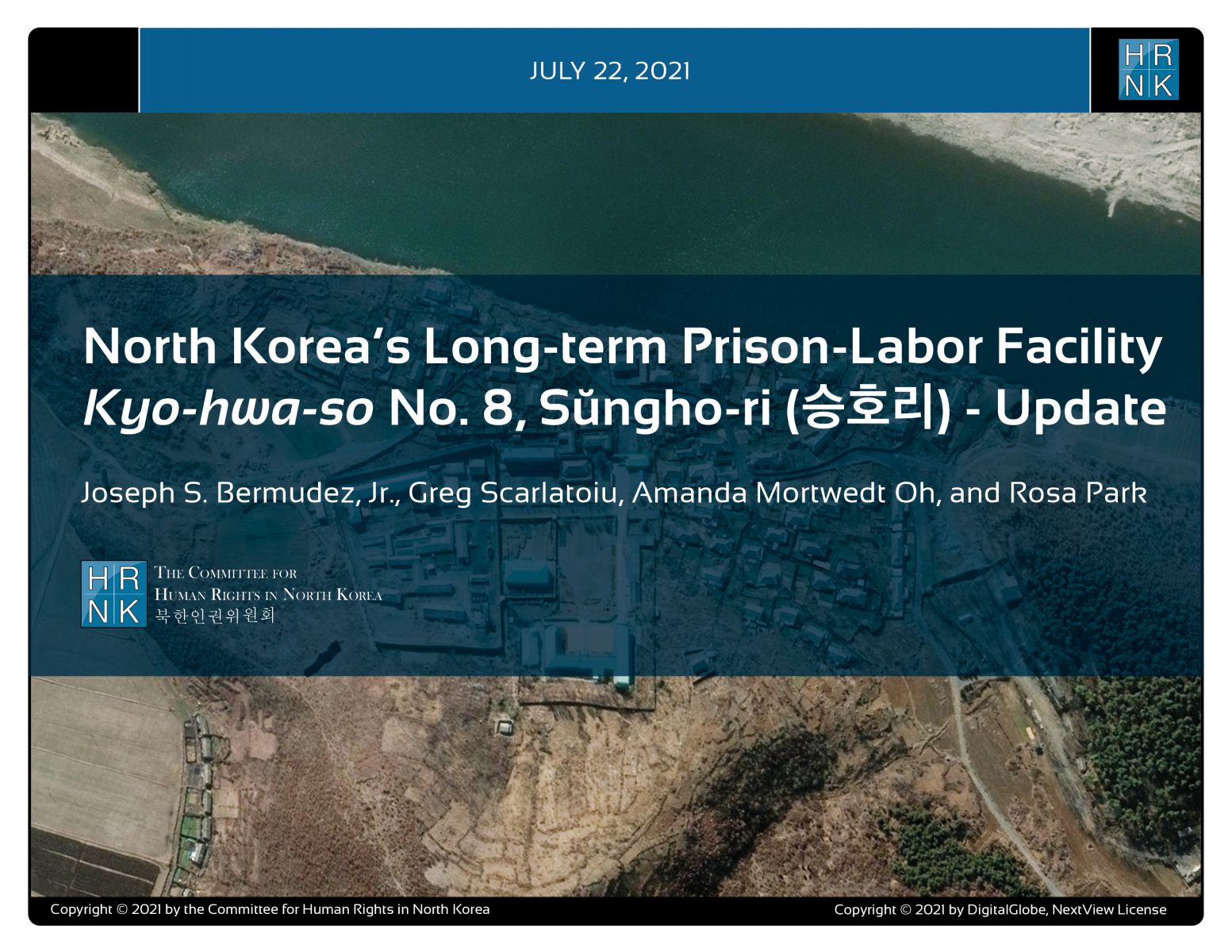
"North Korea’s Long-term Prison-Labor Facility Kyo-hwa-so No. 8, Sŭngho-ri (승호리) - Update" is the latest report under a long-term project employing satellite imagery analysis and former political prisoner testimony to shed light on human suffering in North Korea's prison camps.
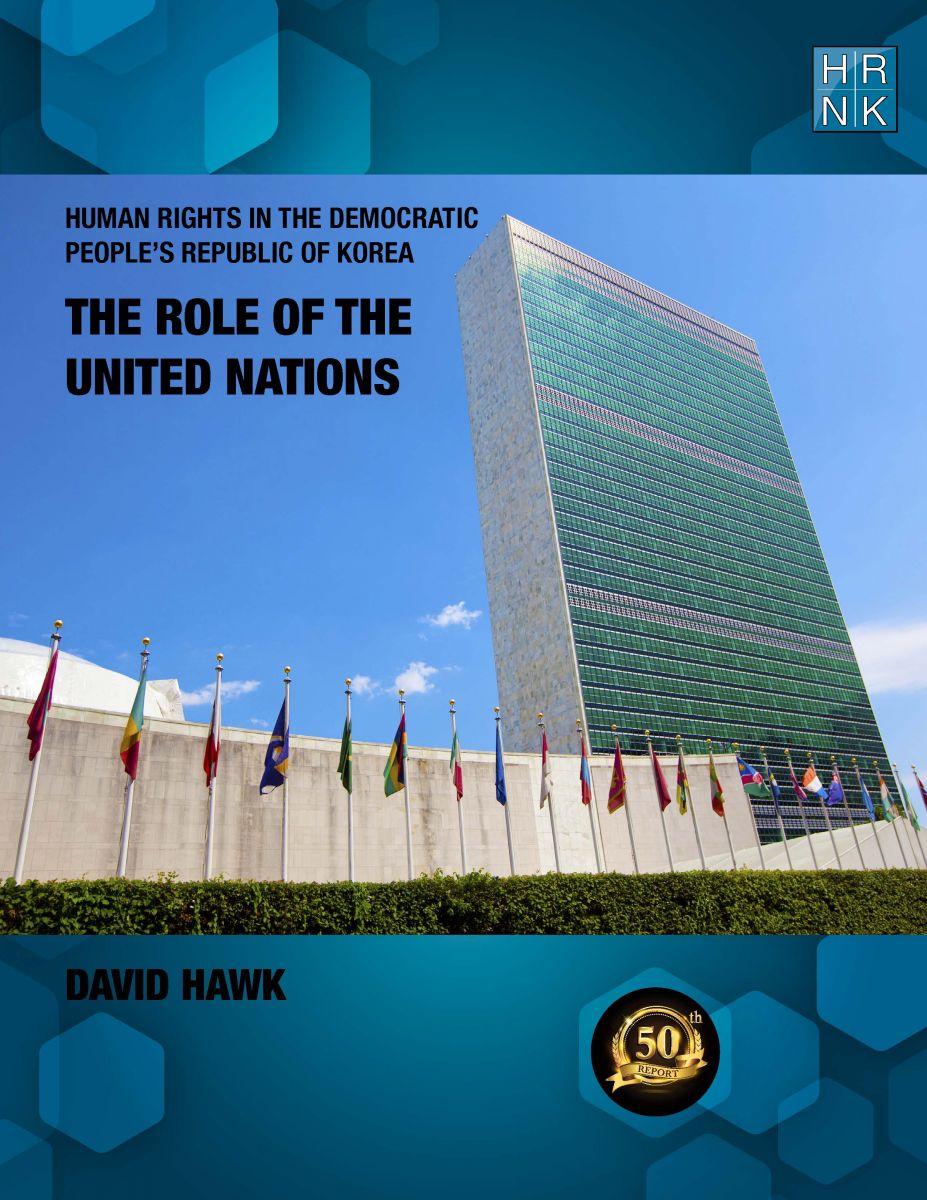
Human Rights in the Democratic Republic of Korea: The Role of the United Nations" is HRNK's 50th report in our 20-year history. This is even more meaningful as David Hawk's "Hidden Gulag" (2003) was the first report published by HRNK. In his latest report, Hawk details efforts by many UN member states and by the UN’s committees, projects and procedures to promote and protect human rights in the DPRK. The report highlights North Korea’s shifts in its approach
South Africa’s Apartheid and North Korea’s Songbun: Parallels in Crimes against Humanity by Robert Collins underlines similarities between two systematically, deliberately, and thoroughly discriminatory repressive systems. This project began with expert testimony Collins submitted as part of a joint investigation and documentation project scrutinizing human rights violations committed at North Korea’s short-term detention facilities, conducted by the Committee for Human Rights
